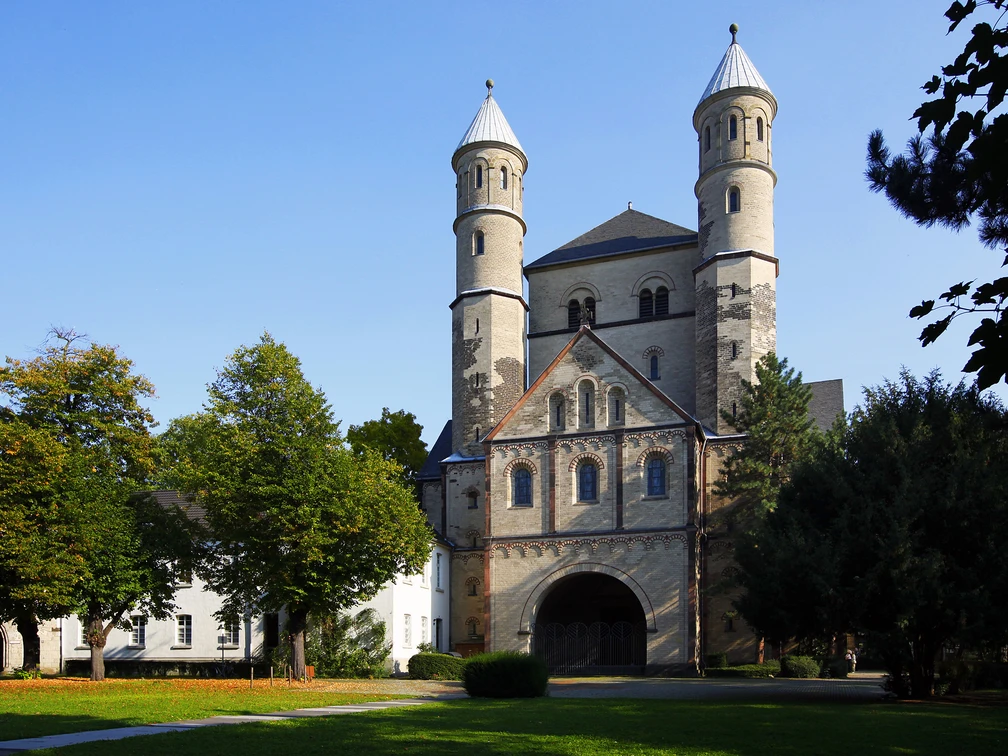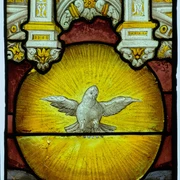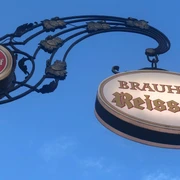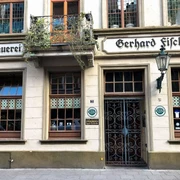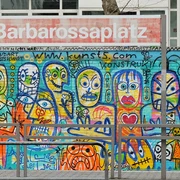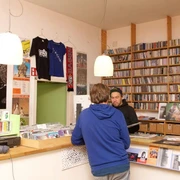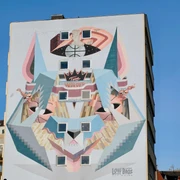- Photos & Map
How would you like to arrive?
- Details
- Useful Information
- Nearby
A chamber, a drawer, a niche, these are places where we store things that are currently not needed. In a church, as a living place where many people operate, it is no different. The story of storage becomes interesting when this neglected place reveals forgotten treasures. This happened at St. Pantaleon around the year 2010, when the church council decided to restore the unused, cluttered ambulatory behind the baroque high altar.
Old stone wall reliquaries from the 17th century and nailed-up, forgotten relic niches in the high altar were uncovered, returning the place to its original function as a sacred space and place of honor for church treasures and relics – thus not unrestrictedly publicly accessible. Such a rediscovery, by the way, was not the first in this oldest of the Romanesque churches in Cologne.
During World War II, the rood screen was provisionally walled up and thus survived the bombing damage. Since 1963, a new organ by the company Johannes Klais, Bonn, has been located in the baroque organ case on the rood screen.
Next to the rood altar are valuable shrines, created around 1170/80 for the relics of Saint Albanus and Saint Maurinus.
In the following centuries, St. Pantaleon was expanded and changed several times, but fell into disrepair in the 18th century, was used by French occupiers around 1794 as a stable, and by Prussians around 1818 as a fortress court with a telegraph station. St. Pantaleon became a Protestant garrison church, then was also used by Catholics and was only returned to the Catholic parish of St. Pantaleon in 1923.
Old stone wall reliquaries from the 17th century and nailed-up, forgotten relic niches in the high altar were uncovered, returning the place to its original function as a sacred space and place of honor for church treasures and relics – thus not unrestrictedly publicly accessible. Such a rediscovery, by the way, was not the first in this oldest of the Romanesque churches in Cologne.
The Rood Screen of St. Pantaleon
In St. Pantaleon, much from the pre-war period, the original structural elements, as well as the Roman foundations have been preserved, making your visit worthwhile not only for the rich fittings. A highlight of the fittings: The late Gothic rood screen from around 1502 – once the barrier between the clerical and non-clerical church areas. This rood screen is one of the only two that still exist today in Cologne. The other stands in St. Maria im Kapitol. Its rich figurative decoration is partly associated with the workshop of Master Tilman in Cologne – one of the few documented carvers and sculptors of the 15th century – and with Tilman Riemenschneider.During World War II, the rood screen was provisionally walled up and thus survived the bombing damage. Since 1963, a new organ by the company Johannes Klais, Bonn, has been located in the baroque organ case on the rood screen.
Next to the rood altar are valuable shrines, created around 1170/80 for the relics of Saint Albanus and Saint Maurinus.
St. Pantaleon: Roman Villa, Theophanu’s Church, and Stable
Like many of the 12 Romanesque churches in Cologne, St. Pantaleon stands on Roman remains: in this case, the ruins of a Roman villa, which you can still visit in the crypt. The earliest record of St. Pantaleon as a church dates back to around 866. In 955, Archbishop Bruno of Cologne, brother of Emperor Otto the Great, founded a Benedictine monastery here. After his death, Empress Theophanu, who ruled over the German Empire for 10 years, took over the new construction and expansion of the church after the old church had collapsed. She extended the nave, built the monumental westwork, and took care of relics like those of the English protomartyr Albanus.In the following centuries, St. Pantaleon was expanded and changed several times, but fell into disrepair in the 18th century, was used by French occupiers around 1794 as a stable, and by Prussians around 1818 as a fortress court with a telegraph station. St. Pantaleon became a Protestant garrison church, then was also used by Catholics and was only returned to the Catholic parish of St. Pantaleon in 1923.
Reburied, Lost, Rediscovered, and Laid to Rest: Bones in St. Pantaleon
Empress Theophanu, like Archbishop Bruno, wished to be buried in the Church of St. Pantaleon. Her bones were reburied several times over the centuries until they were brought to the crypt, which was filled in during the baroque transformation. Thus, the bones fell out of view for a long time until they were rather accidentally rediscovered in the 19th century. Today, Theophanu's bones rest in a modern marble sarcophagus in the westwork. You can find the sarcophagus with the bones of the archbishop in the crypt.St. Pantaleon in World War II and Reconstruction
World War II caused great damage to St. Pantaleon: the roof, parts of the exterior walls, and much of the interior were destroyed. The reconstruction according to Romanesque architecture, with a new flat ceiling with 94 panels by the Cologne glass painter Dieter Hartmann, lasted until 1984. Fortunately, the shrines, the high altar, and the rood screen were protected or relocated and survived the war. St. Pantaleon offers you a tour of its history and art treasures, as well as special themed tours, because you may want to learn more now about Theophanu, the reconstruction, or the baroque furnishings...Useful Information
Eligibility
Bad Weather Offer
for Groups
for families
for individual guests
Payment methods
Entrance Free
Parking facilities
The walk from the stop Barbarossaplatz (Tram: 12, 15, 16, 18) to the church St. Pantaleon takes about 4 minutes.
Nearby
